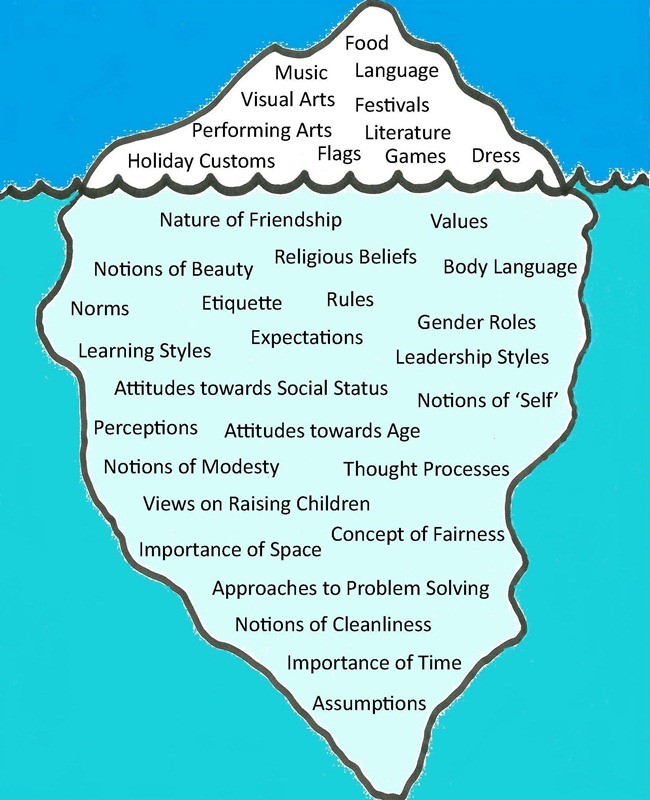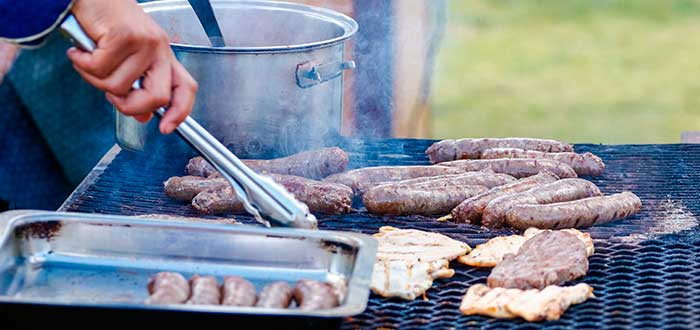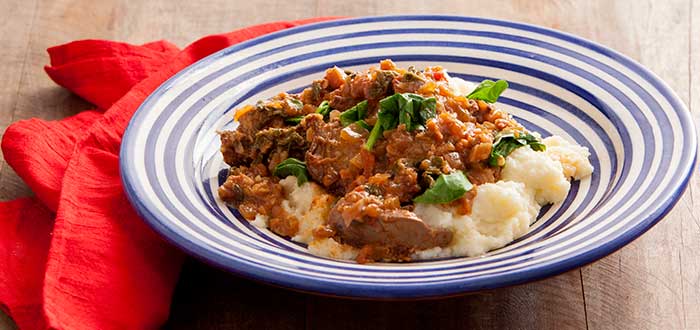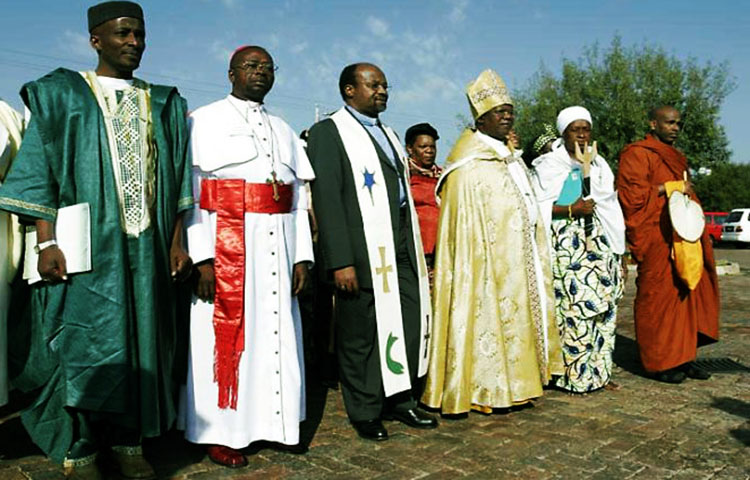Uppermost layers of culture can be easily observed.

Food
South african food is a fusión of African, european, indian and Malay influences, in a communal event where people share together and have fun, the favourite food is meat, usually lamb or beef and made by braai, a method similar to BBQ, traditional people only use woodfire for making braai because they say this way is more authentic. Also, in this communal event people have the opportunity to drink some wine, beer or the traditional south african liqueur Amarula. There are South African foods cheaper than braai, pap, for example, pap is the afrikaan word for porridge, who is made with ground corn and is pretty thick, people enjoy it as breakfast staple and as a dinner as well accompanied with chakalaka that is a vegetal spicy relish.
In addiction, a sticky treat that is well known in the country is koeksisters. It is fried dough, worked into distinctive knots, which are submerged in a cold syrup that makes it very gluey.

Braai 
Poetoepap o pap 
Koeksister
Language

There are eleven official languages in South Africa. These are English (9.6%), Afrikaans (13.5%), Ndebele (2.1%), Sepedi/Northern Sotho (9.1%), Xhosa (16%), Venda (2.4%), Tswana (8%), Southern Sotho (7.6%), Zulu (22.7%), Swazi or SiSwati (2.5%) and Tsonga (4.5%). South Africa also recognizes other non-official languages such as South African sign language, Khoe Khoe and the San. Many other languages from all over the world are spoken there too, including Portuguese, Greek, Italian, French, and Chinese.
The deeper layers of culture are hidden from our view below the surface.
Religious beliefs

South Africa has a large mix of religions, some of them are in specific regions. Most of population are Christians. There are not official religion or prohibition to practice one. Also, there are other religions whit great importance in south Africa like Hinduism, Islamism, budism. Hinduism was presented by officials transferred from Indian subcontinent, while islam was incorporated through Cape Malay by the Dutch settlers’s slaves. Budism was presented by some immigrants from China and India.
Etiquette and norms
South Africa was British colony and they adopted so many elements of British social etiquette; eating with a knife and fork is the norm, there are some traditional foods where this norm is not obligatory, and there are some foods with meat where is better to eat with the right hand, they looks as an insult to leave food in the plate, usually, people give small gift to hosts in a diner party. Also, South Africans are very respectful with older people and treat them with reverence. Usually, older man are called tata, that is a xhosa word for father, oom that is a Afrikaans word for uncle or just sir, while women are called mama, xhosa wors for mom, tanniem Afrikaans wors for aunt or just ma´am. On the other hand, South Africans, usually, express affection very openly so friendly shaking of hands and slaps on the back are commonplace.
South African stereotypes

Most people think South Africans are black people, but, the true is there are a lot of white people in South Africa because they were British Colony. Also, people think there are too many poor people in South Africa and the drawing shows it with the malnutrition that is believed the family suffer, but actually, this country has prosperous economic. As well, people think South African live in little farms and they wear khaki clothes.

